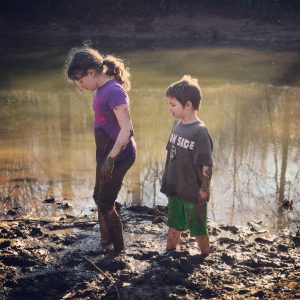Spring is in the air here in Northern Virginia, which means plenty of outside time for me and my children. We have a deep creek in our backyard and often use it as a swimming hole before the pools are open. And for those of you on the opposite side of the country, it’s already swim season (and has been for a while!) So we just want to take a moment and go over some basic water safety tips as you get outside this spring!
First, you have to understand the risks. We’ve talked about it plenty on here, but here it is again. According to the CDC, drowning is the second leading cause of unintentional injury-related death for children ages 1 to 14 years.
Unlike the movies, drowning is most often swift and silent— and many children who drown in home pools were out of sight for less than 5 minutes and in the care of one or both parents at the time. This was my story, although fortunately we were able to grab him in time.
And finally, the place where drowning is most likely varies by age. Children under 1 year most often drown in bath tubs, buckets or toilets. Children ages 1 to 4 years most often drown in home pools. Older children most often drown in natural water settings.*
Basic Water Safety
We’ve collected some water safety tips from the American Red Cross to make sure you are safe and successful in and around the water this spring and summer.
First, know the water hazards in your community and make sure children stay away. These hazards could include—
- Drainage ditches.
- Garden ponds.
- Creeks and streams.
- Wells and cisterns.
- Canals.
Second, maintain constant supervision.
- Maintain constant supervision of children whenever around water.
- Avoid distractions when supervising children around water.
- Have children or inexperienced swimmers wear a U.S. Coast Guard-approved life jacket around water, but do not rely on life jackets alone—always maintain constant supervision!
Third, block access to unguarded, non-designated swimming areas.
Fourth, alcohol and water do not mix. Alcohol impairs judgment, balance and coordination; affects swimming and diving skills; and reduces the body’s ability to stay warm.
And finally, know how to respond to an aquatic emergency.
- If a child is missing, check the water first. Seconds count in preventing death or disability.
- Know how and when to call 9-1-1 or the local emergency number.
- Enroll in Red Cross water safety, first aid and CPR courses to learn what to do. Insist that babysitters, grandparents and others who care for children know these lifesaving skills.
 Drowning is preventable.
Drowning is preventable.
The good news? Drowning is preventable. While swim lessons are never a substitute for supervision, they DO reduce the risk of drowning by up to 88%. At One with the Water, we believe that swimming is a life skill that all children should learn. Swimming equips us with skills that help us live better and could potentially save your life.
Learning to swim teaches us ways to cope with the challenges that come our way in life. The approach used by One with the Water provides success at any age. We empower your child, building their confidence and awareness of the water, teaching your child to swim as quickly as possible. Our swimming lessons for kids are scheduled to meet your needs. Register today and find out more about swimming lessons for kids!
Molly is a member of our creative team, mom of four water-loving babies, and a fierce advocate for CPR training and really early swim instruction.
